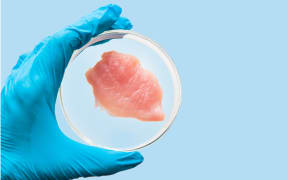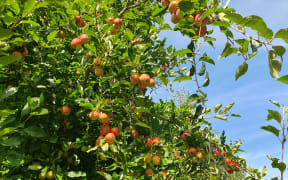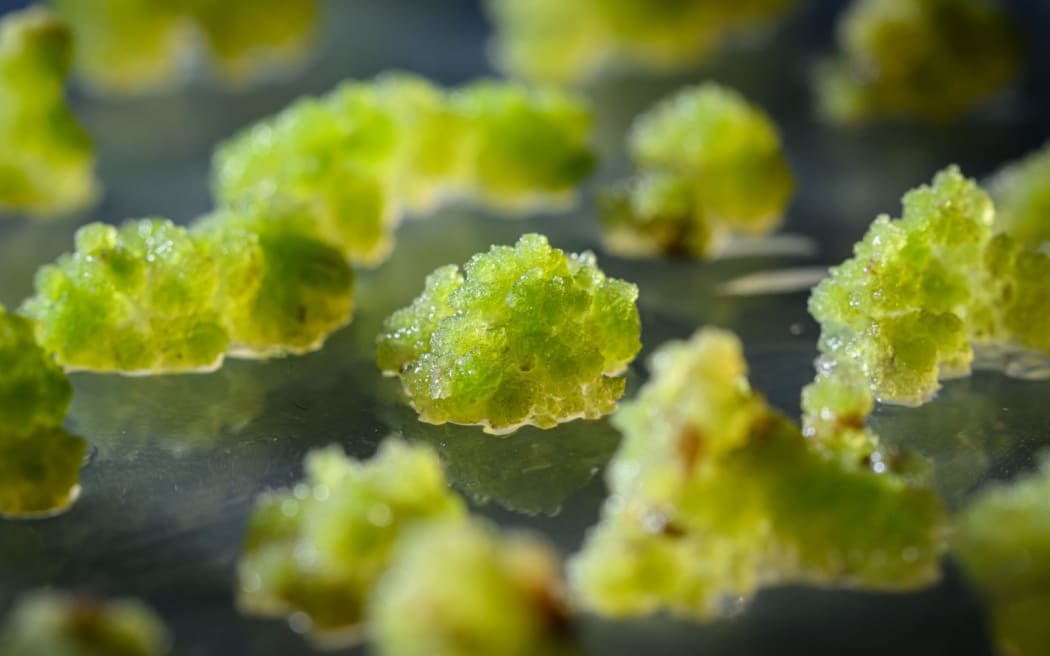
Clusters of blueberry cells. Photo: Plant & Food Research
A team of Canterbury scientists believes fruit production using lab-grown plant cells could be a solution to challenges facing growers.
The work of the Plant and Food Research team, who are exploring fruit production with not a tree, bush or vine in sight, has been described as groundbreaking.
Researchers on the trials hope to recreate the taste and nutritional benefits of regular fruit.
The team at its Lincoln site, south of Christchurch, have been working with cells from several different fruits, including blueberries, apples, cherries, feijoas, peaches, nectarines and grapes, for the past 18 months.
Plant and Food Research's five-year trials are funded through the Ministry of Business, Innovation and Employment's Strategic Science Investment Fund.
Food by Design programme leader Ben Schon said although it's "early days", they were excited by what they had found so far.
"Cellular horticulture currently has a smaller profile than cellular agriculture and aquaculture," he said.
"But we believe this is a really exciting area of science where we can utilise our expertise in plant biology and food science to explore what could become a significant food production system in the future."
The challenge was to create an end product that was nutritious and had a taste, texture and appearance that people were familiar with.
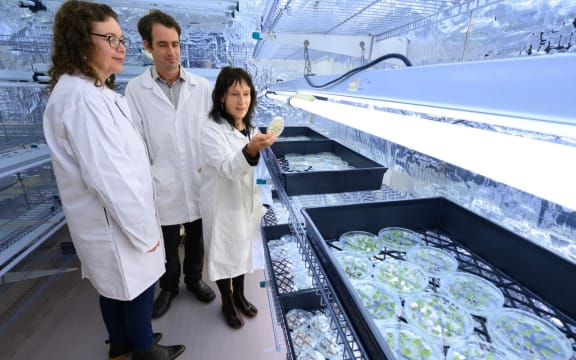
Scientists from Plant & Food Research are aiming to break new ground with their cellular horticulture research. Photo: Plant & Food Research
Schon said they were yet to hit this key marker.
"In order to grow a piece of food that is desirable to eat, we will need more than just a collection of cells. So we are also investigating approaches that are likely to deliver a fresh food eating experience.
"The aim isn't to try and completely replicate a piece of fruit that's grown in the traditional way, but rather create a new food with equally appealing properties."
Unlike the burgeoning lab-grown meat sector, its fruit counterpart is small globally. High interest and development in controlled environment and cellular food production systems have been reported, with more than 80 companies worldwide looking to commercialise lab-grown meat and seafood
Strategy leader Dr Samantha Baldwin said cellular growing could solve some major hurdles food producers are facing, including climate change and urban population growth.
"Globally, we are seeing rapid growth in both the vertical farming, controlled environment growing as well as cell-cultured meat spaces.
"It's possible that cell-cultured plant foods could be a solution to urban population growth, with requirements for secure and safe food supply chains close to these urbanised markets."
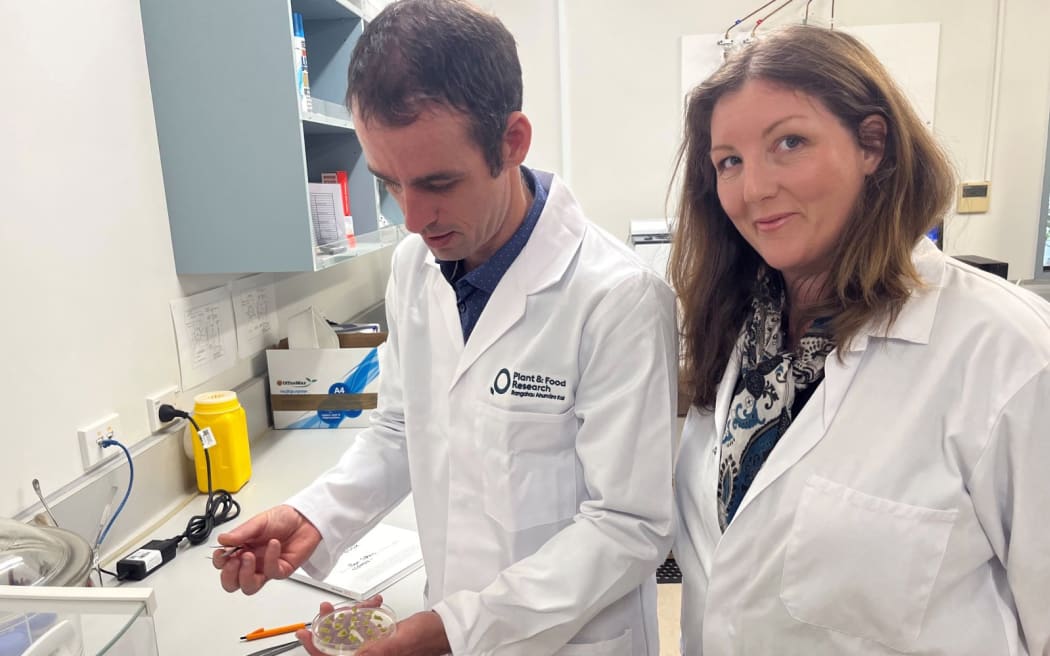
Food by Design programme leader Ben Schon and strategy leader Samantha Baldwin assess a collection of cells at the Lincoln laboratory. Photo: Adam Burns / RNZ
Baldwin said the methods could be of use to outdoor fruit growers, including providing a better understanding of fruit cell behaviour.
"We're talking about cellular horticulture, but actually that knowledge of how the fruit tissue is made, how it ripens, how that is then sensed by the consumer, all of that can actually go into outdoor production in improving the flavour, the taste, the texture of what is being currently grown in the orchards."
Similarly, other groups have pointed to the enormous possibilities of growing fruit in a controlled environment.
FoodHQ represented the country's food innovation organisations. Chief executive Dr Victoria Hatton described the work as "groundbreaking".
"Once you have the science behind the innovation sorted, you can create anything from that.
"I have a vision of these balls of fruity deliciousness being available to me, so I don't have to eat a whole apple for instance to get the nutrients and the goodness."
